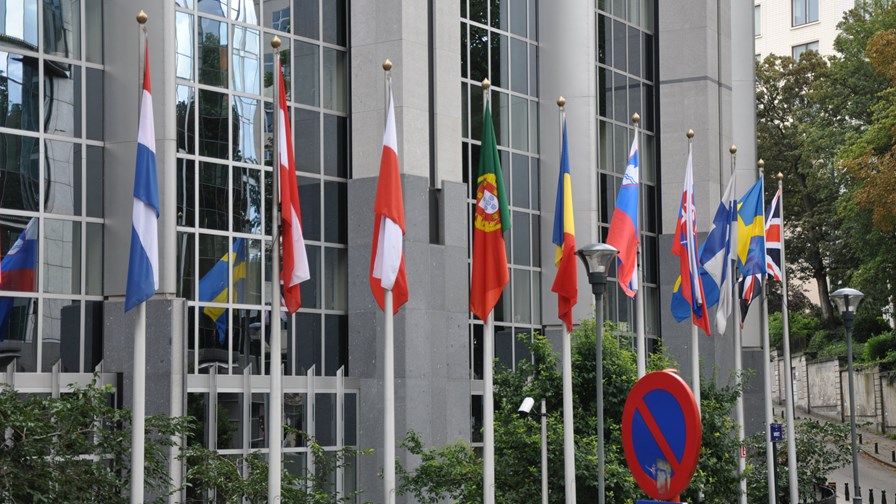
via Flickr © Francisco Antunes (CC BY 2.0)
- Goal is EU-wide gigabit connectivity by 2030 with “no European left behind”
- There’s even a “Digital Compass” to point the way to gigabit Utopia
- Debate held under the aegis of GIGAEurope, the industry body for private investors in gigabit connectivity
- Private/public investment model working well, but some EU policy reforms need to encourage long-term investment
GIGAEurope and EURACTIV have this week held a timely debate on the subject of “Digital Inclusiveness: How to ensure no European is left behind” on the Path to the Digital Decade. The speakers included Members of the European Parliament, academics, and the heads of various policy and executive units from within the European Commission itself. In fact, the European Union (EU) is already some way along its “Path to the Digital Decade, which, by 2030, should have completed its comprehensive digital transformation.
The objectives of the initiative are defined by the four cardinal points of the EU’s ,“Digital Compass” which are; Skills, Secure and Sustainable Digital Infrastructure, Digital Transformation of Business and Government and the Digitalisation of Public Services. According to the President of the European Commission, Ursula von der Leyen, the ubiquitous availability of digital technologies will be the prime “make or break” factor that will determine Europe’s post-pandemic recovery in the short-term and will ensure the EU’s continued sovereignty in the long-term.
GIGAEurope, headquartered in Brussels, Belgium, is the industry body for private investors in gigabit connectivity. It brings together private operators who build, operate and invest in the very high bandwidth communications networks that enable Europe’s digital connectivity. Together, GIGAEurope member provide connectivity services to over 40 million fixed broadband customers and 130 million mobile customers across Europe. Yesterday, GIGAEurope and EURACIV, which works to help European federations, consultancies, NGOs, Chambers of Commerce, regions and political parties increase their visibility, conducted a wide-ranging debate looking in detail at the progress being made down the primrose Path to the Digital Decade.
Irina Varlan, the managing director of GIGAEurope, says von der Leyen’s message delivered during her latest “State of the Union” address, “provides new political impetus to the 2030 digital objectives and targets for digital transformation via a structured framework, driving forwards joint commitments between the European Commission (EC) and Member States to ensure Europe reaches its 2030 Digital Decade objectives.” Underpinning all the Digital Compass targets is secure, reliable and relatively inexpensive gigabit connectivity.
The EC Commission has set 2030 as the date by which least 80 per cent of all European citizens should have basic digital skills. Furthermore, there should be at least 20 million employed male and female ICT specialists across the member states by then. Ms. Varlan makes the point that “training relies on access to connectivity in the first instance. We must ensure all Europeans can participate in the Digital Decade - regardless of location.” The goal for 2030 (or earlier whenever and wherever feasible) is that “all populated areas” will have easy access to 5G and that all households and businesses will be covered by a gigabit network.
€42 billion a year investment gap must be bridged
It’s a laudable and presumably achievable goal but it’s going to cost a lot of money. Currently the investment gap is calculated to be €42 billion each and every year up to and including 2030. Both public and private investment have roles to play in bridging that investment gap and GIGAEurope members, which count Comcast, Liberty Global, Telia Norge, Virgin Media, Vodafone and Warner Media amongst their number, are investing in the widespread deployment of their fixed and mobile very high-capacity networks as well as in R&D. They are provisioning network capacity, to anticipate, meet and exceed demand trends on the party of individuals, households and businesses.
The results of the public/private investment approach is proof positive that the model works. Even during the darkest days of the pandemic Europe’s networks were able to meet unexpected surges in Internet traffic occasioned by unprecedented demand for bandwidth and it should be borne in mind that demand was met simultaneously with the provision of the network capacity and essential services required for governmental, municipal and critical health and other services to continue to function.
However, as the debate showed, EU policy reforms are needed to attract yet more long-term investment and some initiatives are underway. First, the Broadband Cost Reduction Directive is being adapted to further reduce cost and streamline procedures for local permits to build and roll-out gigabit infrastructure and 5G networks. Second, the revised Broadband State Aid Guidelines should help avoid unnecessary overbuild of private infrastructure by subsidised networks and thus lead to more efficient spending of public funds to connect truly remote and rural areas under the Next Generation EU’s Recovery & Resilience Facility. Third, EU member states are being encouraged to speed and complete the 5G spectrum auctions and to respect mobile operators’ investment model in view of the 5G coverage commitments. That’s three more steps down the road to 2030. Mind you, there are still nine years to go, and that’s a long march.
Email Newsletters
Sign up to receive TelecomTV's top news and videos, plus exclusive subscriber-only content direct to your inbox.




